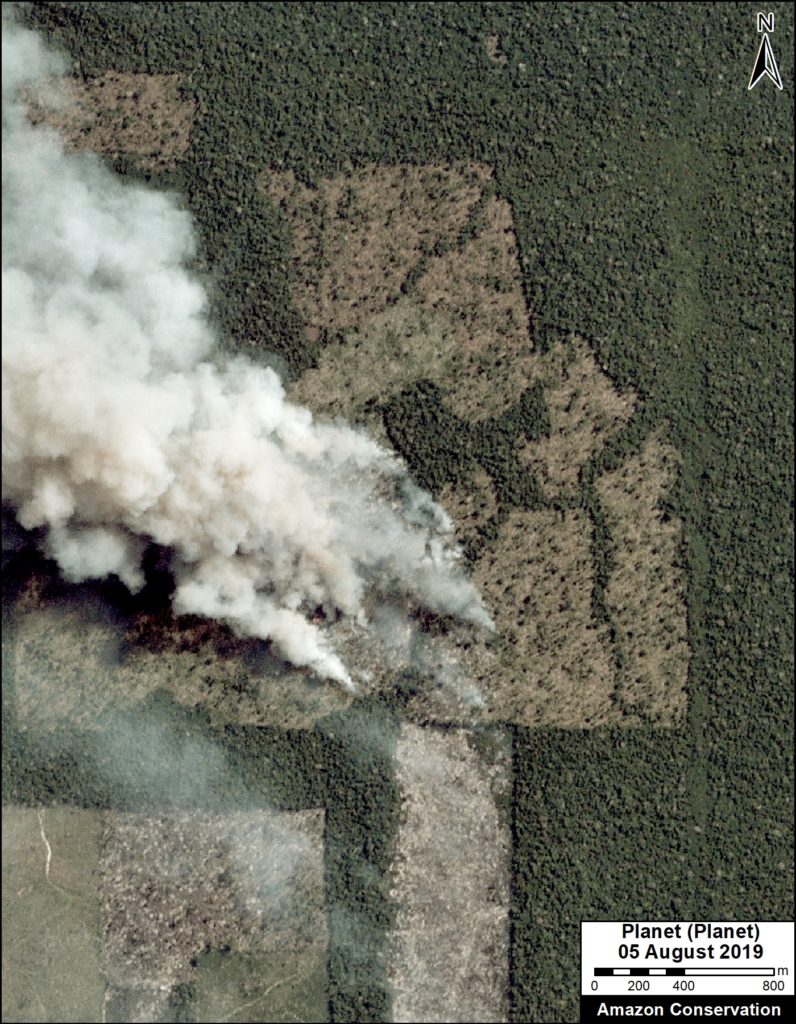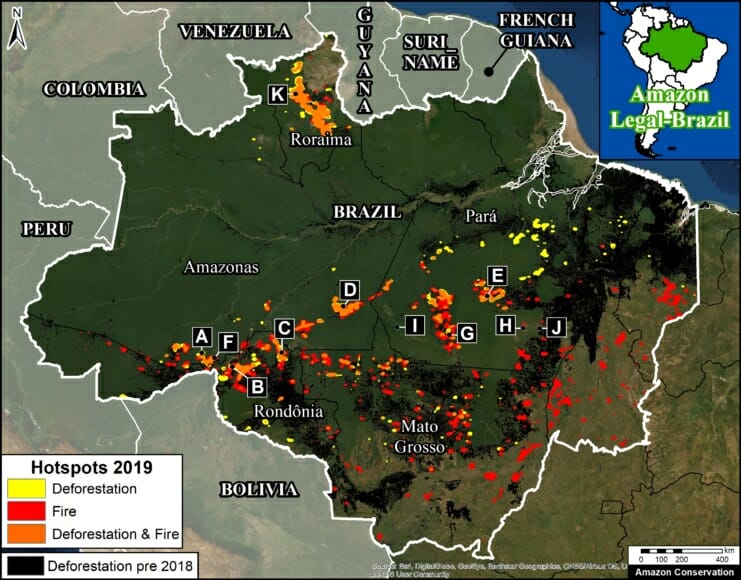We begin a new series on how to harness the power of the cloud to improve real-time monitoring in the Amazon and beyond.
As the amount of data from satellite images has skyrocketed, so have the challenges of research teams to fully utilize this abundant and heavy (in terms of terabytes) information.
In response, tech companies such as Google, Amazon, and Microsoft have been offering their powerful computer power, via the internet (cloud), to help process, analyze, display, and store big data.
Here, we feature Google Earth Engine, which is designed for the free processing of geospatial information (including satellite imagery) and publishing results on web applications.
In our first example, we show the power of Google Earth Engine to help with fire monitoring in the Bolivian Amazon. As noted in our previous reports, the 2019 fire season in Bolivia has been intense, with numerous major fires in the Amazonian dry forests and savannas.
There is currently an urgent need for real-time monitoring of active fires to assist ongoing fire management efforts at the national level. In response, we developed the application described below.




